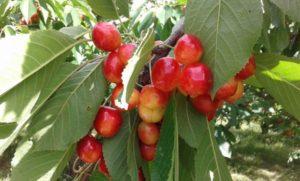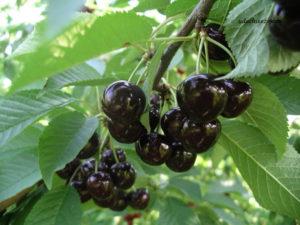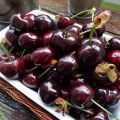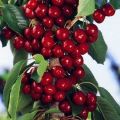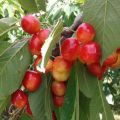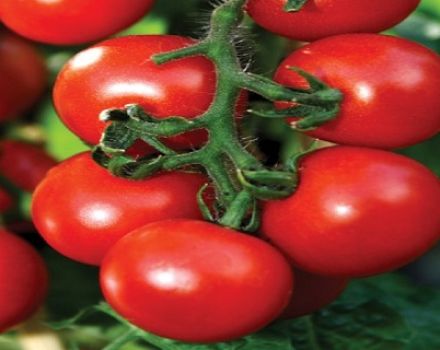Reasons why cherries do not bear fruit and what to do for treatment
Sweet cherry as a fruit crop attracts the attention of gardening enthusiasts with its high productivity rates and relative undemandingness to growing conditions. There are many varieties of it, with different ripening periods, and color of berries. When growing, it often happens that cherries do not bear fruit, why this happens can only be found out by studying the main causes of such an ailment.
Possible reasons
Depending on the variety, the ripening period for cherries begins in late May and ends in the last days of July. So, early species bear fruit already in late May-mid-June, with an average ripening period in mid-June, and the harvest of late varieties is done at the end of July. But if there are no fruits or there are very few of them, then you need to identify the cause and eliminate it so that the tree will recover faster.
Incorrectly selected variety
Since sweet cherries belong to southern crops, it is recommended to choose a variety taking into account the climatic characteristics of a particular region. Those varieties that grow and bear fruit well in the Moscow region and the Urals are ineffective to plant in the Siberian Territory. Sweet cherry varieties with a low degree of resistance to cold weather form flowers, but the harvest is missing.
For areas with severe frosts, it is best to choose cherries with an increased level of winter hardiness, whose buds are not afraid of negative temperatures.
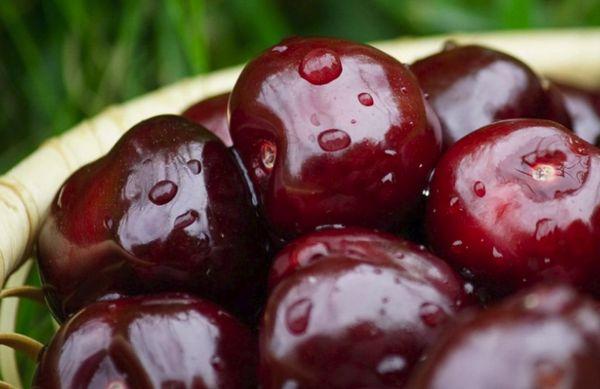
Freezing
When growing cherries, you should be aware of their vulnerability to low temperatures. Especially, spring frosts are dangerous for future fruits, when the daily temperature is at around 10 degrees. Inflorescences die, and ovaries due to the night cold (-1 degree already provokes freezing of fruit buds).
To protect the inflorescences, it is necessary to keep the snow in the trunk circle for as long as possible.
No pollinator
If the cherry blossoms, but does not bear fruit, then the reason may be the self-infertility of the culture. Most cultivars require cross-pollination as this fruit variety does not have a male / female division. There should be at least one more sweet cherry on the site, which blooms at the same time. The optimal distance between them is 3-4 meters.
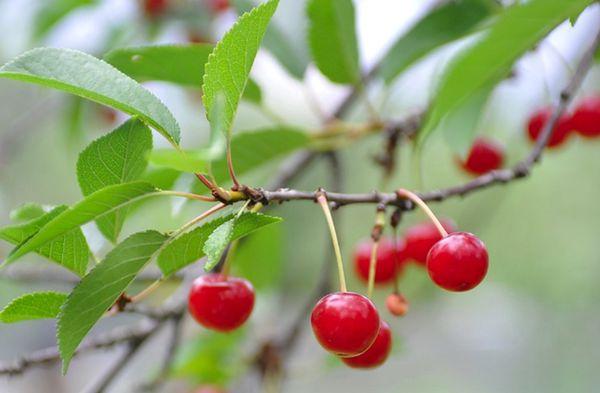
It is best to place several varieties in the garden - in groups. There are also partially self-fertile specimens, but without additional pollination, they yield only 5-10% of the possible productivity indicators. In the absence of space for planting another sweet cherry, 2-3 different species can be grafted onto one stock.
Age
The first crop of sweet cherry is formed after 4-5 years from the moment the seedling was assigned to a permanent place. It all depends on the date of planting, its correctness and compliance, the basic rules of care. On young plantations, not so many fruits are formed, only at the age of 10 years does an adult tree have a corresponding crown, which is capable of producing abundantly (10-30 kilograms).
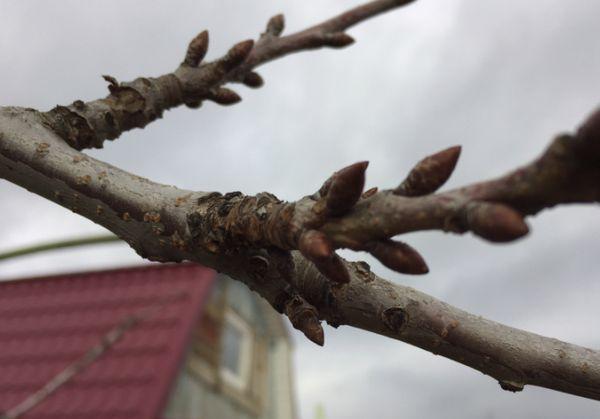
A decrease in yield indicators for sweet cherry occurs after 15 years. The accelerating factors of this negative trend are:
- incorrectly executed tree shaping;
- lack of cropping;
- advanced stage of the disease;
- landing in shaded areas.
Incorrect crown pruning
An illiterate manipulation of the formation of the crown of a tree often leads to a lack of harvest. In young specimens, fruiting is suspended for several years, but in adults it stops suddenly. The main task of the annual pruning is to facilitate the establishment of a large number of fruit buds, while not causing intensive growth and loss of resistance to negative temperatures.
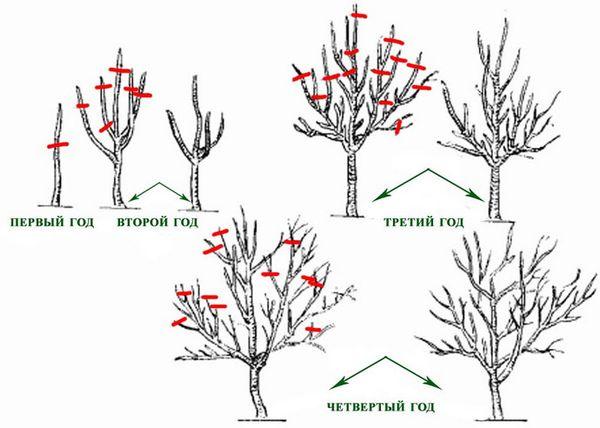
In the first 2-4 years after planting in a permanent place, cherries are given a tree-like or bush-like shape. In the spring, to stimulate the formation of new shoots, last year's growth is shortened by ½ the length. The tree should have 3 tiers with a distance of 50-60 centimeters. When the cherry is 5-6 years old, you should perform anti-aging pruning and top pruning at a height of 3-3.5 meters.
The crown must not be allowed to thicken, otherwise perennial buds die. It is recommended to start work before the start of sap flow. The wounded surface must be treated with a garden varnish without fail. First of all, branches directed to the inside of the crown, damaged by frost and diseases, should be removed.
Accumulation of excess moisture
The main problem in the cultivation of stone fruit crops, in particular sweet cherries, in central Russia is preheating of the root collar. The damping process itself is not only dangerous by the weakening of the tree, but also by its death. It is more expedient to plant this fruit variety on small slopes or light hills, where the accumulation of moisture near the tree trunk is excluded.
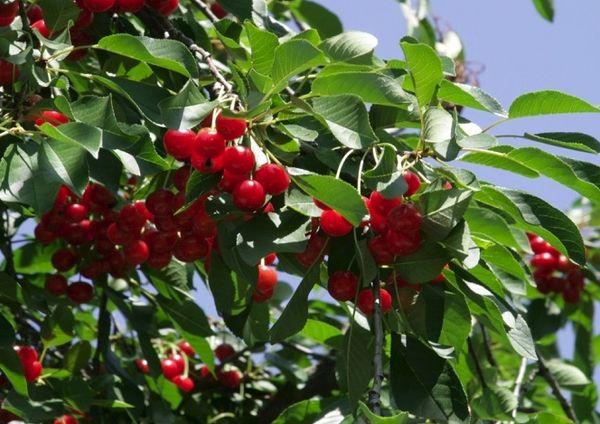
With the correct organization of the irrigation system, sweet cherry yields a stable harvest. In the northern regions, it rarely suffers from a lack of moisture, this problem is more relevant for the southern regions. In drought conditions, ovaries massively fall off on fruit trees. During such periods, the tree needs abundant periodic watering.
In order not to spoil the taste of the fruit before the stage of pouring berries, irrigation should be stopped.
Diseases and pests
The presence of parasitic individuals and the development of diseases significantly reduce the yield of sweet cherries. Fungal infections are especially serious danger for the garden: spotting, moniliosis, coccomycosis. It is possible to detect such diseases by fading leaf plates, drying out of lateral branches, the presence of dark foci, and gum flow.
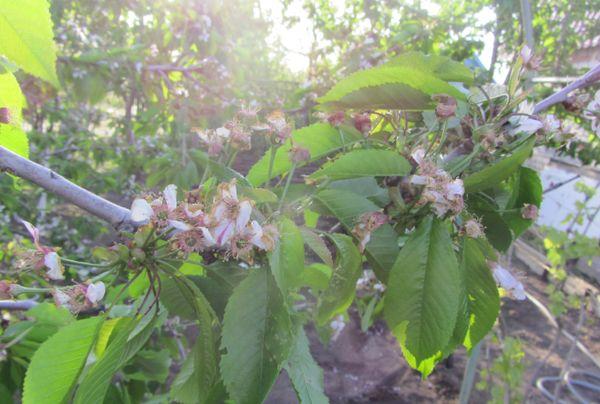
Methods for combating fungal diseases include:
- removal of affected parts of the tree;
- treatment with a working solution based on Bordeaux mixture, copper oxychloride.
Of the harmful insects on cherries, one can often find small aphids, cherry fly, leafworm, moth. Karbofos, Aktellik, Iskra are highly effective against such parasites. In order to prevent their appearance on cherries, it is necessary to spray with one of these insecticides at the beginning of the season. In addition, in the fall, you should dig deep into the soil, clean and whitewash the trunk, cut off the crown.
What to do if the cherry does not bear fruit
In order for cherries to bloom and bear fruit abundantly, it is necessary to adhere to the correct agricultural technology. The introduction of nutritional mixtures is one of the main conditions for high results. The first feeding procedures are done after the snow melts. Mullein infusion, working solution based on Nitrofoska, urea are used for these purposes.

Before the flowering phase, potassium sulfate (40 grams) and superphosphate (40 grams) must be added to the trunk circle. The subsequent procedure for feeding such formulations is done before the stage of ovary formation. Before winter, the soil should be dug up and rotted manure should be added to it.
Preventive measures
If the cherry does not give fruit, it is necessary to choose the right place for planting, avoiding close occurrence to the surface of groundwater (at least 2 meters). As planting material, you need to purchase only healthy seedlings, without signs of damage, disease, and also adapted to the conditions of a specific climate. In addition, they must have a trace of the vaccine.
To reduce the likelihood of lack of fruit on cherries, such agrotechnical techniques as crown formation, loosening of the soil in the near-trunk circle, and removal of weeds will help. The frequency of watering during the season is 3 times; to preserve moisture in the ground, a mulch layer of rotted sawdust and freshly cut grass is used. In addition, preventive treatments against major diseases and harmful insects should not be ignored.
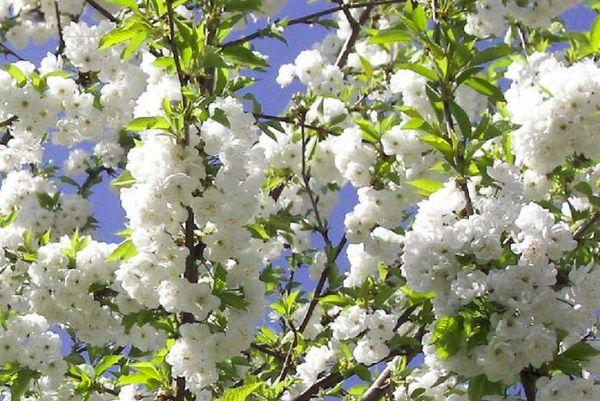
To increase winter hardiness, cherries are recommended to be planted in not cold lowlands and to properly trim the crown. Watering in dry weather and the introduction of nitrogen, phosphorus-potassium compounds will also increase the level of frost resistance of the tree. Covering the soil in the tree trunk circle with snow will help protect cherries from freezing.
In order to prevent a decrease in productivity, damaged branches should be treated with garden varnish.
Cherry will give a bountiful harvest only if all planting and care rules are followed. The choice of a variety suitable for specific conditions will only increase the chances of obtaining the desired result.
